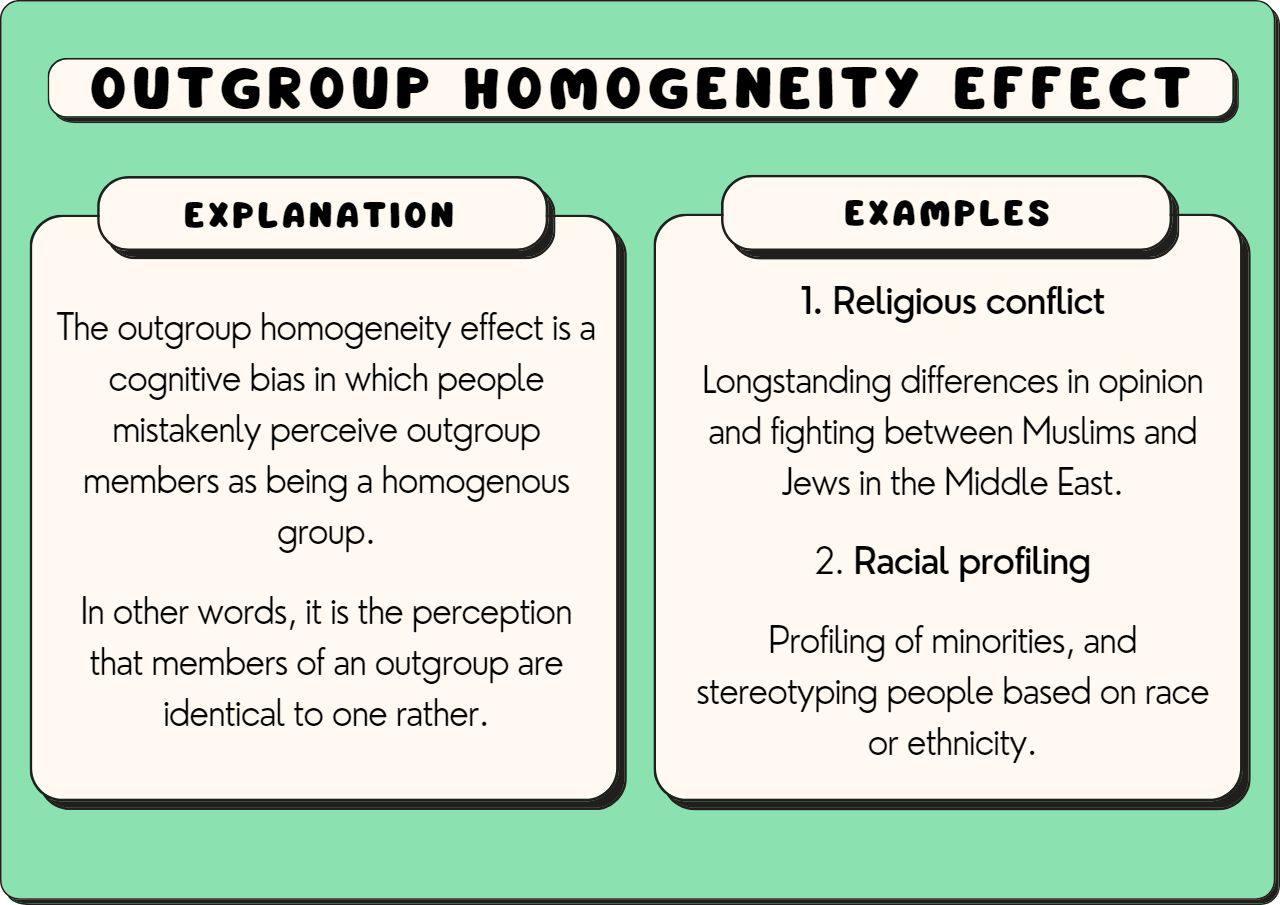The out-group homogeneity bias is a cognitive bias that involves individuals perceiving members of an out-group (those outside their own social or cultural group) as being more similar to each other than they actually are, while simultaneously recognizing the diversity and individuality among members of their in-group.
Explanations:
Out-group homogeneity bias is closely related to social categorization and the tendency to categorize people into groups. People often have limited interactions with members of out-groups and may rely on stereotypes, leading to the perception that out-group members are more similar to each other.
Examples:
Ethnic Stereotyping: Individuals from one ethnic background may mistakenly believe that members of other ethnic groups share similar traits, behaviors, or cultural norms.
Nationality Bias: People from one country may generalize that individuals from other countries are homogenous in terms of behavior, values, or customs.
Political Grouping: Members of one political party may believe that individuals from opposing parties all hold the same political beliefs and values.
Solutions:
Challenge Stereotypes: Actively question and challenge stereotypes and assumptions about out-groups. Recognize that diversity exists within all groups.
Encourage Individual Interactions: Promote interactions and relationships with members of out-groups. Building personal connections can dispel biases and promote understanding.
Promote Cultural Competency: Encourage cultural competency and the recognition of cultural diversity. Understand that even within the same group, people may have distinct backgrounds and perspectives.
Educate and Raise Awareness: Raise awareness about the out-group homogeneity bias and its impact on perceptions and behavior. Education can lead to more accurate and equitable judgments.
Addressing the out-group homogeneity bias is crucial for fostering inclusivity and breaking down stereotypes and misconceptions about individuals from different social or cultural backgrounds.
